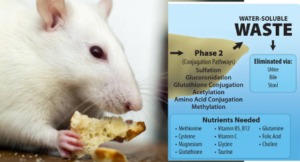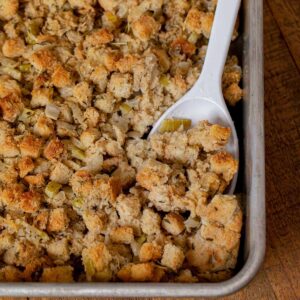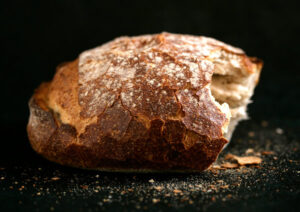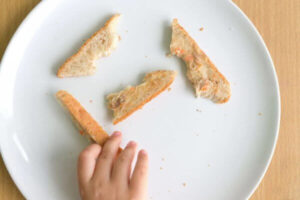
I’ve eaten toast for breakfast or sandwiches for lunch since I discovered bread’s existence. Not once, in all these years, have I ever cut the crusts off a single slice. There’s a lot to be learned from those delightful, overlooked edges.
Bread Crust’s “Roll” Against Cancer?
The nutritional value of bread crust often goes unappreciated because not enough people take the time to recognize it. Bread crust actually contains compounds that have cancer-fighting potential. Researchers in Germany have found that the crust is rich in antioxidants (“Bread Crust And Stuffing Rich In Healthy Antioxidants,” 2002). The reason these compounds become concentrated in the crust is all in the baking.

Maillard Reaction: Delicious Chemistry
The crust forms as a result of the Maillard Reaction, in which amino acids and reducing sugars react from heat. What follows from these chemical reactions are the formation of enticing aroma components, the distinct brown surface, and an enhanced flavor. The interaction between the protein-bound amino acid L-lysine and reducing sugars at high temperatures is what gives us pronyl-lysine (“Maillard reaction,” n.d.).
Darker breads like pumpernickel and wheat contain higher amounts of these antioxidants than the typical white loaf (“Bread Crust And Stuffing Rich In Healthy Antioxidants,” 2002). However, burning your toast to a crisp won’t increase the levels because eventually, the Maillard reaction just becomes…well, burning.
Proving Bread Crust’s Worth
In the sourdough mixture used by the researchers, this novel antioxidant was 8 times more abundant in the crust than in the crumb! It wasn’t present in the flour mixture either, which suggests that the crust of the bread may provide stronger health benefits than any other part.
 Veronika Fasit, Ph.D., demonstrated that this antioxidant raised the level of phase II enzymes in human intestinal cells. Phase II enzymes defend against carcinogens and toxic chemicals (Zhang, 1970).
Veronika Fasit, Ph.D., demonstrated that this antioxidant raised the level of phase II enzymes in human intestinal cells. Phase II enzymes defend against carcinogens and toxic chemicals (Zhang, 1970).
Annamalai University in India examined the effect pronyl-lysine had on the development of precancerous lesions in rats — eating bread seemed to reduce the development of these lesions by up to 72 percent (“Bread Crust And Stuffing Rich In Healthy Antioxidants,” 2002)!
Bread is also known as a great source of fiber, a nutrient important for digestion and for lowering the risk of heart disease, diabetes, and certain cancers (“Dietary fiber: Essential for a healthy diet,” 2022). What isn’t as well known is that the crust is where most of the fiber accumulates!

Thinking Outside the Loaf
These experiments don’t mean you can never cut your crusts again — it just means that you should put the scraps to good use. In fact, the antioxidant might be even more abundant when you make something with several small pieces. When you bake broken down bits in a stuffing or bread pudding, increased surface area means more reactions can occur!
Crust Me, It’s Delicious!
I’ve never understood the hate bread crusts received. To me, it felt completely undeserved when that’s where the best flavor is! A study with French baguettes even confirmed this.
Tasting the Difference From Crust to Crumb
This bread study evaluated the connection between the bread crumb vs. the crust on volatile release and aroma perception.

Volatiles are substances that evaporate easily and are released from food when changes take place. Processes like hydration with saliva and the increase in surface area are then sensed in the nose. These flavor volatiles give us a window into the sensory properties of food while it’s being eaten (Taylor, 1996).
Participants in the study consumed different samples of crusts and crumbs. The researchers measured their chewing behavior, perceptions, and volatile release. Results revealed that the volatiles, or markers, of the crust were released more quickly. This led to perception dynamics that differed from those of the crumb. There are several contributions to this observation. The crust’s firmness, which requires greater muscular activity to chew, released more volatiles. It’s placement on the surface and brittle structure lead to the crust being broken down more rapidly and thus a faster release of markers (Jourdren et al., 2017).
Aroma perception had some pretty noticeable differences, too. When food is eaten, the compounds from the aroma released into the oral cavity, where it interacts with olfactory receptors to allow the consumer to perceive the dimensions of flavor of their food (Jourdren et al., 2017).
Slice of Life

Parents of crust-haters might be relieved that their child eats any part of the bread at all. As a former picky eater, I would never guilt anyone into eat a certain food. But at the same time, I’d never leave the crust out of the experience of a crunchy slice of toast or a hearty sandwich. A loaf of bread doesn’t just appear without it’s crust. Crust is evidence of the cascade of reactions that allowed it to form and protects the delicate crumb lying inside.
A Toast to the End of Bread Waste
A crust thrown away is a small representation of the 119 billion pounds of food wasted each year (“Food Waste and Food Rescue,” n.d.). Most of this waste is bread, with over 240 million slices tossed annually. Even if you are adamantly anti-crust, a gentle reminder: bread freezes well and stale bread can be transformed into croutons, breadcrumbs, bread pudding and plenty more.


